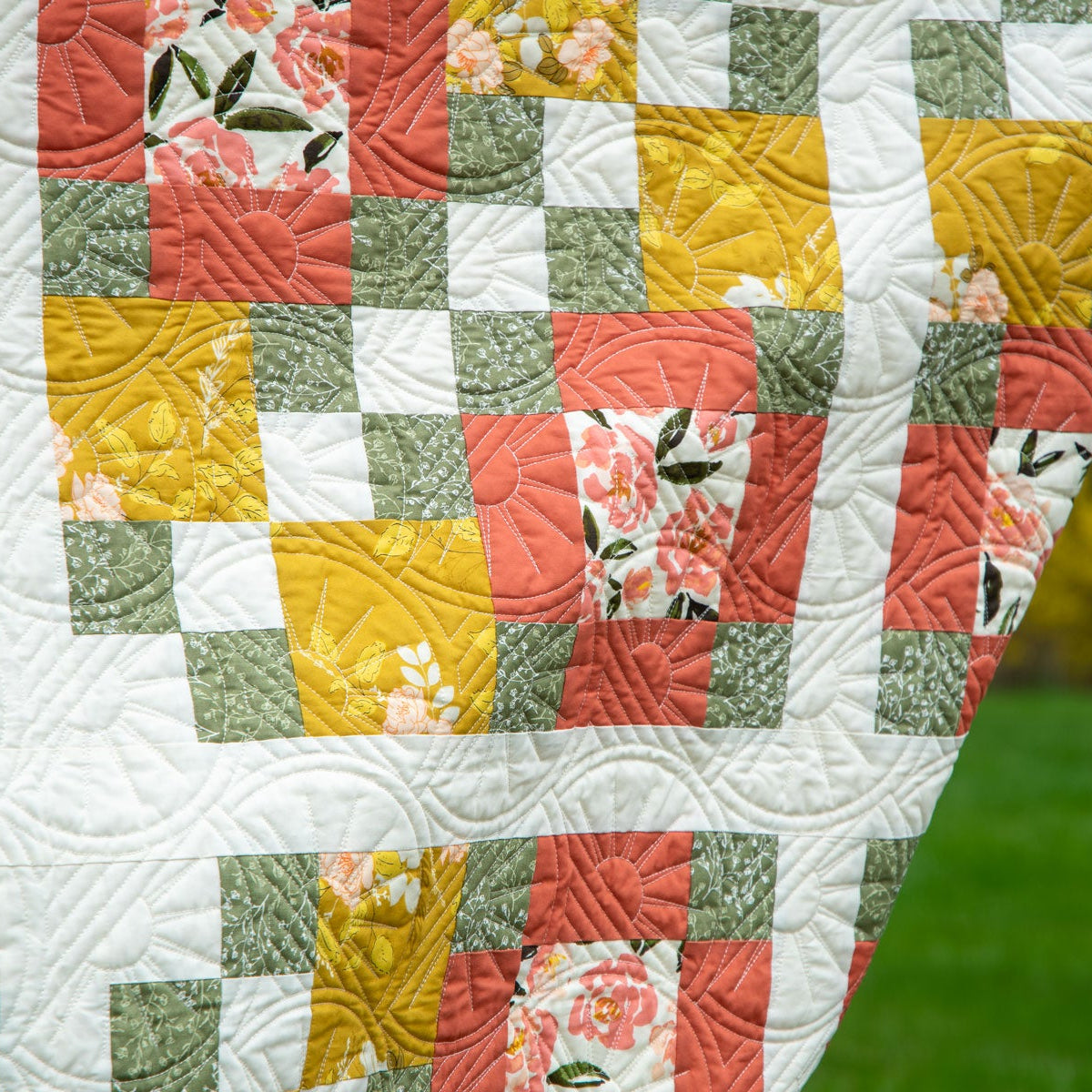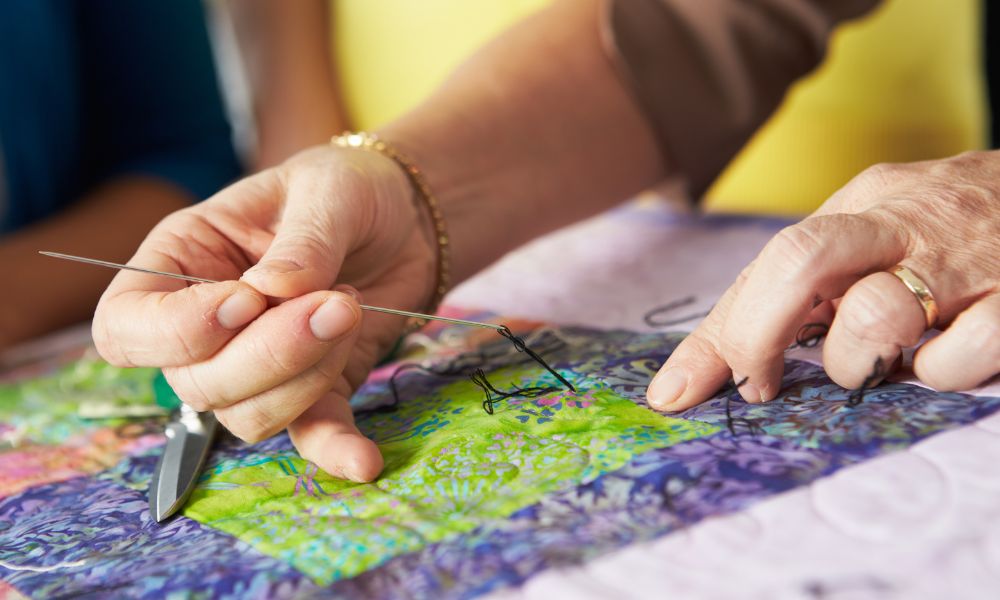Classic Quilting Project Ideas for Beginners

Quilting is a fun pastime that parents, grandparents, and children can learn together. Grandparents teach their children, then teach their children’s children, and so on. It’s a fun bonding experience that stays close to your heart.
However, there comes a time when someone close to you can’t offer help or does not know how to quilt a blanket you want to make. Thankfully, the internet is there to teach the next generation of children whose grandparents or parents can’t show them how to get into this activity. We’ll cover everything from gaining a basic understanding to choosing fabrics for a playmat in this post on classic quilting project ideas for beginners.
What Is Quilting?
Before jumping into making a quilt, you must first understand what quilting is. Simply put, it is the process of sewing two or more pieces of fabric together to create a thicker padded material. Quilts have a multitude of uses and might even include three layers instead of just two.
The first layer is the quilt top, the middle layer consists of the insulation or padding, and the bottom is the backing material. This isn’t always the case, as some people choose to approach quilting in different ways. If you decide on giving quilting a try, be sure to have the supplies you need and a design you like in mind.
Your Main Supplies
Now that you understand what quilting is, it's a good idea to pick out the tools and supplies to make the perfect quilt. Knowing the best tools will help in your pursuit of learning to make good quality quilts.
Sewing Kit
Some quilters choose between sewing by hand and purchasing a hand sewing kit. The kits contain standard sewing supplies you need to become proficient, and it's no surprise quilters choose hand sewing for budgeting reasons. But if you're flexible, consider using a sewing machine. As you become more comfortable in quilting, you'll want crisper lines and better accuracy.
If you plan on venturing into more extensive projects, a sewing machine would be the wiser choice. Higher-priced sewing machines come with more innovative programming and customizable features, so choose your device wisely. Sometimes you don't even need additional features, as standard machines can work perfectly for you.
The Fabric
You can’t make a quilt without including the fabric. When it comes to classic quilting project ideas for beginners, this is the most customizable part of creating a quilt. Not only should you find the colors you like, but you should also be on the lookout for quality. Lower-quality materials translate to low durability and a shorter lifespan for your quilt.
Using 100 percent cotton is a safe choice, but you should still know the stitch count. Stay above 70 threads per inch, as going lower than 60 means the stitch count is too loose. A lower number means less strength and more stretch.
Secondary Supplies
Here are some secondary supplies that can prove useful. Obtain them after gathering your main supplies.
Rotary Cutter and Mat
Making a quilt requires you to cut accurately. Rotary cutters provide precise cutting, which means accurate piecing. By learning how to cut efficiently, you'll increase your work speed. The tool is like a pizza cutter, and its blade is exceptionally sharp. The ideal size for your edge is about 45 millimeters.
Alongside your cutter, you need a self-healing mat. It’s the barrier that protects your fabric and your workspace. A recommended size is 24 inches by 36 inches. Be sure to store it in a flat area. Also, you can get a folding mat if the size is too large.
Iron and Ironing Board
When you want to make accurate cuts and have accurate stitching, an iron and ironing board are your best friends. You don't have to go all out with these either; just find a sturdy board and an iron with a steam function.
Using these will keep the fabric smooth, prevent unwanted folding, and keep corners tidy. Based on your lifestyle, you can even purchase a travel steamer to take on the go.
Pins and Quilting Ruler
Quilting projects require basting to prevent unwanted mistakes. So, using a large set of basting pins will decrease errors while sewing. Even a small project can require over fifty pins, so be generous with using them.
Another essential item is a quilting ruler. This tool is usually acrylic and has a gentle gripping ability to keep the fabric from slipping while you’re using a cutter. A quilting ruler even includes markings for quilt-specific projects.
Simple Patchwork Quilt
The standard patchwork quilt is a tried-and-true project for anyone, and it’s also timeless and recognizable. Patchwork quilts range from simple kitchen placemats to wall tapestries. What you create comes down to the time and effort you put in. Patchwork patterns give you flexibility with different designs and materials. Further, you can make your quilt look as intricate as you wish.
Finding a suitable fabric comes down to availability. You can check your local fabric store or search through an online retailer’s website. However, if you aren’t in the US, there are many quilts for sale in Canada you can choose from. We at Lindley General Store have a vast inventory of patterns and supplies for any occasion! We also provide numerous tricks to help you if you get stuck on your beginner projects.
Hair Accessories
Yes, you can even make an accessory for an outfit. Making a hair accessory is a small and easy project to help you practice hand stitching. Time is the main factor to consider here. Some accessories include:
- Headbands
- Scrunchies
- Hair clips
Quilting doesn't have to be exclusively decorative; it can also be something you use to express your tastes. So consider making a floral scrunchie that matches your skirt.
DIY Quilted Bags
Quilted bags have been popular for years, and it’s no wonder why people still use them. They’re functional, sturdy, roomy, and stylish as can be! Bags range between totes, purses, handbags—there are so many possibilities. What’s even better is that they’re quick to make as well.
Patterned Throw Quilt
Throw blankets are timeless decorative accents to add to your couches and chairs. They provide extra warmth for when you're reading on a cold day and can be incredibly beautiful. You can easily make your patterned throw by incorporating the skills you learned while creating your initial projects. The designs and materials you want are up to you.
Quilted Playmat
You may be surprised to find that quilts can be more than just blankets or throws. They can use simple patterns or adorable and complex ones. Moreover, they can add an extra pop of personality to a room. If you want to make a quilted playmat, the one supply to know about is cotton batting. It provides extra cushioning that a standard quilt doesn’t possess. By creating a playmat, you can offer a cushioned spot for your child to sit. You can stack a couple of layers of batting to make it even more comfortable. It’s sure to be a great addition to your children's rooms.
Quilting can feel daunting as you learn. But with practice, you’ll be on your way to crafting attractive items while enjoying a pleasant hobby. So, start today so that you can give that newborn cousin the soft quilted baby blanket you’ve been working on!








Comments